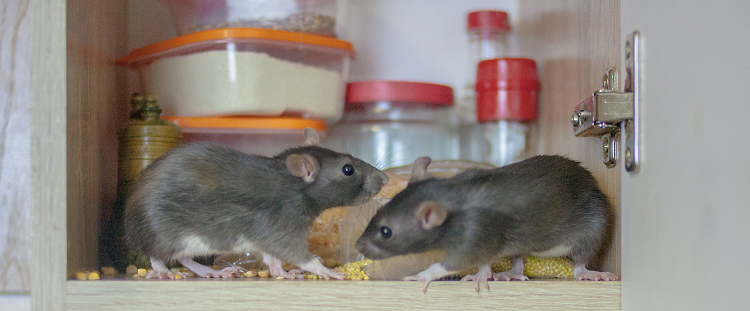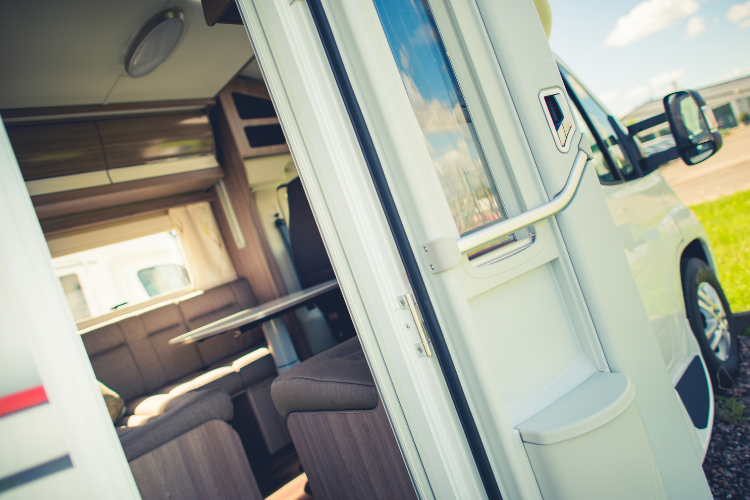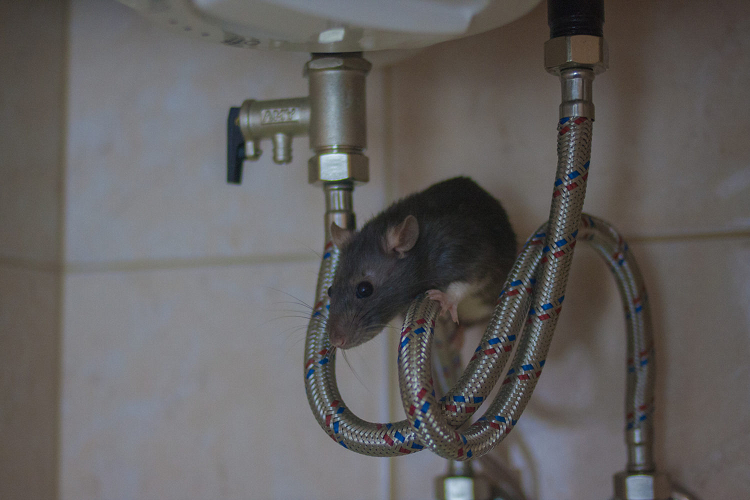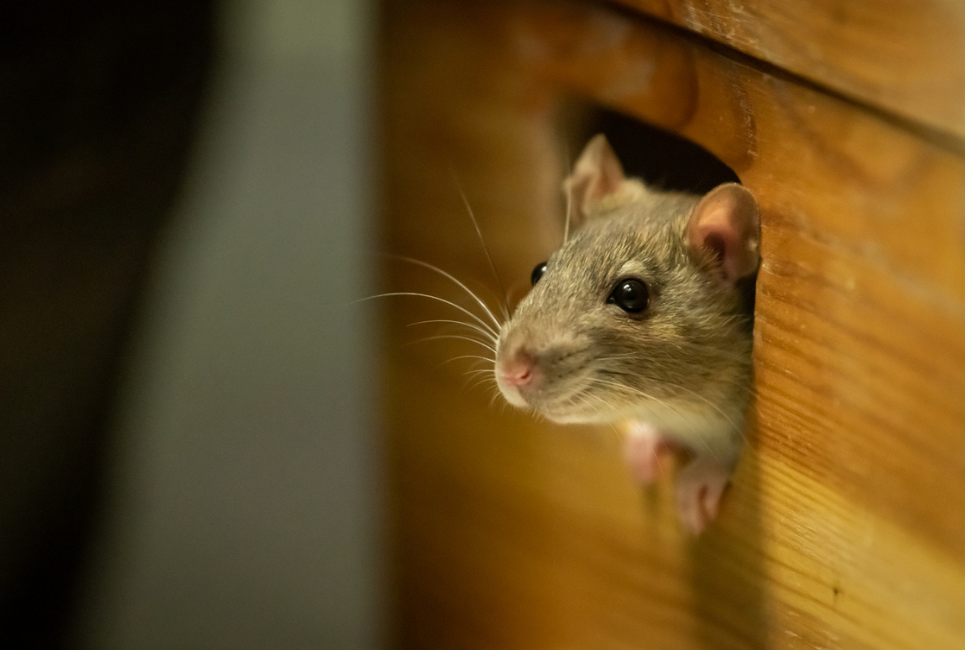Your RV is the home away from home to help you relax amidst nature. Unfortunately, mice love the cozy setting of the RV almost as much as you do. No wonder, you might find mouse droppings on the floor one fine morning.
And that’s the least damage they can cause. It can get much worse when they start multiplying! So, how to mouse proof a camper?
After camping in various campsites throughout the country, I have used a wide range of tricks for tackling the mice problem. While these destructive creatures are hard to get rid of, there are some methods that are effective against them.
Let’s get into it!
Bottom Line Up Front
Preventing the mice from entering the camper isn’t an easy task. But the following basic steps can help in keeping them out.
- Check for holes in the camper and block them with sealants or metal wool.
- Store food items in sealed metal containers and don’t keep food lying around.
- Keep the camper sparkling clean and clutter-free
- Use natural fragrances like peppermint oil, black coffee powder, or garlic to deter mice.
- If necessary, set humane traps to get rid of mice.
12 Tips to Protect Your RV From Mice

The main thing that attracts mice to an RV is the comfortable inner temperatures. Since rodents are warm-blooded creatures, they look for a warm and dry shelter once the outside temperatures drop. Since an RV also provides easy access to food, it’s a great place to take shelter.
Since they are great climbers, they can easily access an RV through one of the numerous tubing, hoses, or wirings. Since they can fit through openings as small as 1/4th of an inch, you can’t block their entry effectively.
That means you need to stay prepared and not attract mice.
Here are some of the most effective ways to prevent mice from crawling into your RV.
1. Inspect for Holes
While you can’t block every hole in the RV, blocking the non-essential ones will minimize mice entry. Even if your RV is well maintained, inspect the door window gaskets, casings, vents of the HVAC system, and the water, sewer, or electrical lines for holes.
However, reaching the holes underneath the vehicles isn’t possible in most cases. The best option is to block the holes from the inside of the RV. Look for holes in the floor, behind the furniture, below the sink, and fill them with caulking or spray foam.
Another option is to use siliconized acrylic latex or polyurethane sealants. These products stretch and adjust themselves as the holes expand or contract due to temperature changes.
Additionally, place some steel or copper wool inside the openings as an extra layer of protection. Pack them tightly so they don’t get dislodged as the vehicle moves.
For the holes that can’t be blocked off, use a mesh screen. If the screens get corroded, replace them at the earliest. You can place mothballs near the openings as an additional deterrent.
If your RV is parked under a tree, the mice can find their way in from the roof. Ensure that all openings in the roof are properly closed off. Lastly, seal the opening between the door and the base by using a high-quality door sweep.
2. Get Rid of Food Sources
Any food item that’s not boxed or bagged is likely to attract the attention of these critters. Keep in mind that mice have a great sense of smell. So, food items spread around the RV will lure them in search of a free meal.
Never leave food items lying around. These include items like sugar, flour, dried fruits and nuts, granola bars, trail mix, uncooked pasta, etc. If you’re carrying pet food, seal it up as well. Avoid storing pleasantly scented items like soaps or cough drops. Mice can eat almost everything.
When your camper is in storage, remove all food items from it. Keep in mind that the little devils will chew through plastic bins and Tupperware compartments. Only canned items can be kept inside.
Always keep the pantry doors and the cabinets firmly shut to prevent any access in them. Use locks on the doors if needed.
3. Keep the RV Clean

Cleaning up your RV in the right way is an extremely important step for keeping rodents away. In fact, cleanliness will keep not only mice but other critters away too.
When you have crumbs or pet food lying in the corners, it will attract mice. Clean up all the surfaces in the kitchen, floors, drawers, cabinets, and under the cushions. Make sure there are no spills or anywhere in the RV. If you have kids, inspect all the places they are likely to leave any food. Pay special attention to the food preparation and food consumption areas.
Don’t forget to remove items like toilet paper, paper towels, newspapers, clothes while storing the RV. Mice will find them useful for making nests. If your camper has a “basement” area for storage, keep it clean.
Ideally, you should clean the RV every day, and put the trash in sealed plastic bins in a designated location. When you are storing the camper for long periods, do a deep clean.
4. Install Lights under the RV
Think of installing a few LED light strips as underbody lights. Since mice are nocturnal creatures, they love to operate in the dark. Lighting up the underside during the night will deter them from finding their way in.
Beyond that, you can add lights to the outer surface of the RV as well. This will lighten the area around the RV and reduce rodent activity. However, this arrangement will also attract bugs. That’s a downside that you need to consider.
Some RVers feel this method isn’t effective. But in reality, the idea makes sense and is worth trying out.
5. Use Natural Scents
Since mice have a strong sense of smell, you can use it against them. Placing some scented items or spraying specific scents around the RV can help in repelling rodents. Some natural items whose smell the mice will dislike are peppermint, cayenne pepper, vinegar, cinnamon, mint, and tea bags.
In my experience, peppermint essential oil is one of the best ways to prevent mouse entry inside a camper. You can place peppermint-soaked cotton balls inside the RV. Otherwise, add a few drops of the oil on fabric pieces and place them in selected spots.
Keep in mind that peppermint can be an irritant for your pets. So do the right research before using it. Also, retrieve the cotton balls once the scent has faded away. Or else, reapply the oil after a week.
If possible, sprinkle some dried sage leaves in the grill or the campfire. The smell will help in keeping the rodents away.
You can use sprays that have a dispenser nozzle for spraying. Some natural sprays not only work for years but also act as a lubricant. When sprayed on the surface, it makes it difficult for mice to walk on the slippery surface. Sprays are easy to apply around the undercarriage, the tires, and other areas that are hard to access.
Pouches made from a combination of botanical materials and herbs are available commercially. These are pleasant-smelling for humans but repel the mice. You can place the pouches in areas that are more prone to rodents.
I have found garlic to be a strong deterrent against rodents. You can slice garlic into small parts and wrap it using gauze. Then leave these warps in spots where you have seen mice.
Beyond that, you can wrap black coffee powder in paper towels and place them over the countertops and in places where food is stored.
However, if mice have already built a nest inside your RV, it’s unlikely that a scent will make them leave their cozy home. You have to use other methods to remove them.
6. Use Sheet Metal

Not only are mice great diggers, but they are also great climbers. So, they will easily climb over the tubes, tires, and jack stands.
One way to prevent this is using strips of galvanized sheet metal. Sheet metal sheets are easily available in hardware stores. You can cut them into long strips and form vertical tubes or rings around the jack stands and tires. Make them at least 10 inches in height and free from any gaps.
The smooth metal surface will prevent the mice from climbing over the parts of the vehicle that are directly in touch with the ground. The bad news is, they can dig under the barriers and scurry to the top.
Note, some may suggest using an RV cover to prevent mice entry. In truth, it’s not an effective way to prevent infestation. Not only can mice chew through the cover, but they can also use it to climb to the roof of the RV.
If you already have an RV cover to prevent weather damage to the RV, you can surely try using it. But I wouldn’t recommend buying an RV cover just to prevent mice from entering.
7. Park the Camper on a Hard Surface
Storing your camper on a paved surface is a better option when it comes to preventing mice entry. Grassy or unpaved areas are more prone to rodent activity. A hard surface will act as a buffer between the ground and the RV.
Before selecting a spot for the RV, check for any signs of mice activity. If there’s any sign, move to a different spot.
8. Use Ultrasonic Sound Devices
These are small electronic devices that can be plugged in have a small range. They generate ultrasonic sound waves that have a frequency that’s beyond the human range of hearing. The sound waves can irritate rodents with a higher hearing range in multiple ways and discourage them from entering your RV.
The problem is, there’s no specific evidence to suggest that the commercially available devices deliver results. While some users have achieved results from it, others haven’t. So, it’s best to use these devices in conjunction with other preventive methods.
Keep in mind, these devices can affect your pets and irritate them. If you have pets, don’t use them.
9. Use Mouse Traps
If you’re desperate about getting rid of mice, setting traps in your RV is an effective and cheap way of doing it. But, it’s not entirely a cruelty-free method.
If you’re searching for a favorite bait for mice, stop. There isn’t any. The best option is to use a variety of baits with the traps. These include oatmeal flakes, bacon bits, peanut butter, vanilla extract, birdseed, etc. You can also place bits of nesting material like cotton or floss.
Make sure to set the traps in the right location. Since mice love to travel through shadowy spots, place traps in spots like behind boxes and under equipment. Keep in mind, trapping isn’t so effective in cluttered spaces. So, take some time to declutter the RV before setting traps.
Another trick that works is pre-baiting traps. That means you place the traps with the baits without actually setting them for 2 or 3 days. After that set them and check every 24 hours. If the mice aren’t showing interest, you need to change the location.
Plastic snap traps or box traps are simple to set and reset. They can also be disinfected after use and stored. Both traps allow you to dispose of the still-living mice far away from the camping spot.
Glue traps come with sticky sheets that are effective in trapping mice. But they are an extremely cruel option. You may not want the creature to meet a miserable death due to thirst or starvation.
Spring traps are old-fashioned and relatively more humane. Once the spring is released, it’s supposed to the neck of the mouse and kill it instantly. The clean-up is simple too.
Note, wear gloves when you are collecting or emptying traps.
10. Using Poison

Poison is an effective way to kill mice as they imitate the natural food items that attract mice. The drawback is, introducing poison in a natural environment isn’t the best choice. Besides, such poisons might be toxic to pets and children.
Most rat poisons contain a high dose of second-generation anticoagulants. These can be lethal to other predatory animals that may consume contaminated mice. That results in collateral poisoning of various species.
Generally, a mouse that consumed the poison is expected to move out of the RV. But that may not happen at all times. When the mouse retreats in a hiding place and dies, you end up with another problem. If you can’t find the dead mouse, it will decompose and start stinking.
So, it’s best not to use poison when you have other methods at your disposal.
11. Using Dryer Sheets
Using scented dryer sheets inside the camper is one way that you can deter the mice from roaming around. They are easy to use and readily available. You will need to replace them periodically as they lose their potency with time.
Do they work?
They might, if used with other methods. Some fragrances like peppermint may work more than others. If not, they will surely freshen up the environment inside the RV. Just don’t place them on the floor as the mice might find them useful for nest-building.
12. Keep Your Campsite Clean
A campsite that’s kept unclean will surely attract mice and other animals. Rodents are more likely to frequent a campsite littered with half-burned trash and pieces of plastic wrappers.
Carry odor-proof and durable garbage bags that you can use in case the campsite doesn’t have a trash management system. Always double-bag your trash and store them in high places. It’s also necessary to clean up all spilled or leftover food particles and dispose of them at least 200 feet away from the camping spot.
Frequently Asked Questions
Question: How Do I Keep Mice Out of My Camper in the Winter?
Answer: The most important step is to keep the camper clean and block any holes that can allow the mice to enter. Remove all food items except canned ones.
Question: Does Irish Spring Keep Mice Out of Campers?
Answer: Not necessarily. Since it’s strong-smelling, Irish Spring may help in keeping the mice out. But there are some reports that campers found mice eating the soap.
Question: Do Dryer Sheets Keep Mice Out of Campers?
Answer: In reality, dryer sheets may not offer positive results as the only method. You can use them with other natural items like peppermint oil or garlic.
Question: Should I Cover My Camper with a Tarp?
Answer: You can cover your camper with a tarp to protect it from the elements. But that won’t prevent the mice from entering.
Final Thoughts
Dealing with mice is an annoying part of camping. But don’t let it stop you from planning your next trip.
It’s best to take the right preventive measure to stop the mice from entering your camper in the first place. Tackling the devils once they have entered the camper is much more difficult.
The basic steps that you need to take are keeping the interior clean and storing the food items in the right manner. In addition, check for any holes that might allow them to enter and block the openings.
While it’s not possible to “mouse-proof” your camper entirely, the simple steps mentioned here can help prevent a small mouse problem from becoming a major one.

